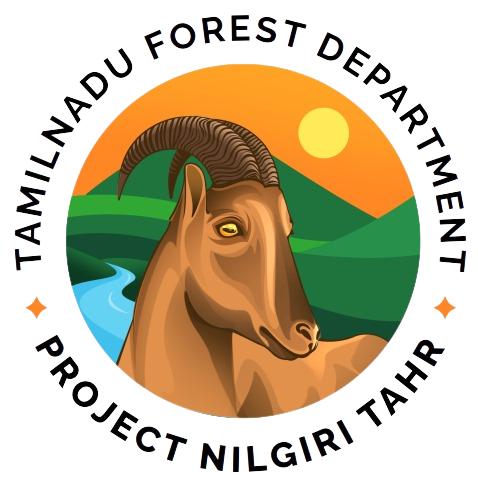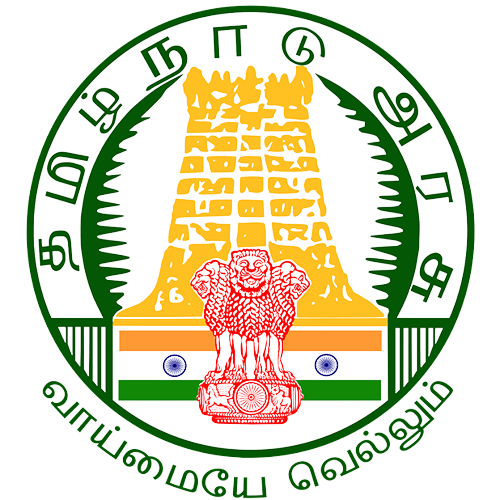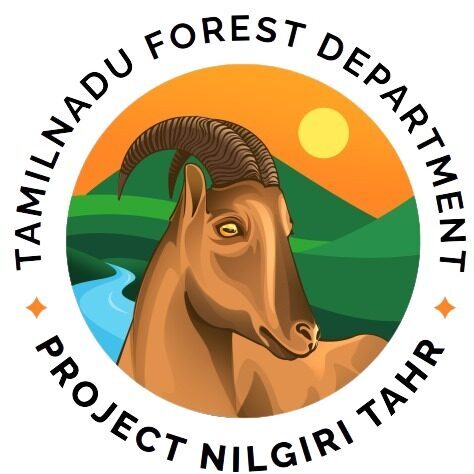About the project
INTRODUCTION
The iconic State animal of Tamil Nadu, Nilgiri Tahr is an elusive endemic mammals found in the Western Ghats of Tamil Nadu and Kerala. The first of its kind project to conserve the state animal, ‘Project Nilgiri Tahr’ was implemented by the Tamil Nadu Government on 24th Dec 2022 (G.O. MS. No 222). Nilgiri Tahr is one of the 12 species of mountain ungulates occurring in Southern India. These mammals are the Guardians of the mountain ecosystems and Shola Grasslands, which are the origin of perennial rivers.
ADMINISTRATIVE SETUP FOR THE PROJECT NILGIRI TAHR
The project Nilgiri Tahr is headed by a Project Director who will be assisted by an Assistant Director. The team includes Research Coordinator (Senior Scientist) and Four Senior Research Fellows for each Tiger Reserve namely Anamalai Tiger Reserve, Srivilliputhur Meghamalai Tiger Reserve, Mudumalai Tiger Reserve and Kalakkad Mundanthurai Tiger Reserve.
BIENNIAL SYNCHRONISED SURVEYS ACROSS THE DIVISIONS
Nilgiri Tahr is distributed in both the states (Tamil Nadu and Kerala) in a connected landscape. Coordinated, synchronised surveys would help in delineating the actual distributional areas, current population, evaluating conservation challenges and getting an effective population enumeration. The First initiative for Synchronized survey of Nilgiri Tahr by Tamil Nadu Government is being taken up in the year 2024. Population surveys from isolated areas can be evaluated using non-invasive genetic assessment. Remote areas can be evaluated using drones fitted with high-definition cameras.
TRANQUILIZATION, COLLARING AND MONITORING OF NILGIRI TAHR INDIVIDUALS
Tranquilization process is very much essential for any animal to be captured after getting prior permissions from the state forest department. Capturing Nilgiri Tahr may require careful attention by physical mode or chemical restraints. For conducting this, an expert committee formed by government involving the District Forest Officer of concerned division followed by Deputy Director and Field staffs and highly specialized expert wildlife veterinarians along with selective experts from Non-Governmental Organizations having vast exposure and knowledge in tranquilization procedures and radio collaring mechanisms. Radio collaring few Nilgiri tahr individuals would be first of its kind for any mountain ungulate in India. Few Nilgiri tahr individuals from different age-sex categories from larger herds and from isolated populations should be collared.
RE-INTRODUCTION AND MONITORING OF NILGIRI TAHR
Historically, Nilgiri tahr is believed to have ranged over the more significant part of the Western Ghats. The historic habitats for re-population of Nilgiri Tahr, will be chosen based on a detailed Habitat Suitability study. Pilot re-introduction to 1-2 sites with extensive monitoring is planned. Reintroduced populations would be extensively monitored to understand the adaptation and challenges in the process. This understanding would help refine future reintroduction plans.
DIAGNOSIS AND TREATEMENT FOR AFFECTED INDIVIDUALS
Many Nilgiri tahr individuals have been observed with abnormal swellings/lump in different regions of the body, including face, neck , stomach and inner thigh etc.the lump/ swelling is found to be irrespective of gender and any age class including yearling. Hence, it is planned to capture a few affected Tahr under safe protocols and to collect the tissue fluids and blood samples, for diagnosis of the primary causative factors of lump disease. Based on the pathological analysis of the collected specimens, treatment plans will be adopted for lump affected individuals. Based on the diagnostics, suggested preventive measures could be adopted for the affected animals across various divisions.
FIELD GEAR AND TRAINING SUPPORT TO STAFF
Field gears like Spotting scopes, Binoculars are very essential to build the capacity of forest staff to effectively patrol and conserve the Nilgiri Tahr habitats. Providing training to field staffs thereby sensitizing them about Nilgiri Tahr behaviour and ecology to do effective perambulation in Nilgiri Tahr surviving habitats. To organize periodic meetings with field staffs for capacity building, and conducting Orientation programs and workshops in each Tahr holding divisions are very crucial to make the frontline Field staffs, efficient in monitoring the population and habitat assessment of Nilgiri Tahr effectively
SHOLA GRASSLAND RESTORATION PILOT IN UPPER BHAVANI
The shola-grasslands predominantly found in the higher elevations of Western Ghats are the primary habitats of Nilgiri Tahr. Over the period of time many of these habitats have been converted to plantations like Tea, Eucalyptus and pine. Invasive species like wattle, Scotch Broom have also taken over grasslands. These efforts need to be scaled up and prioritized in Nilgiri Tahr habitat, especially in areas where connectivity of the habitat can be re-established. Under the Project Nilgiri Tahr, Grassland restoration work involving removal of invasive species and planting of native Grass species, in Nilgiris, potentially in Upper Bhavani catchment is being implemented. This restoration could also lead to substantial improvements in the hydrology of the region, including downstream impacts on the river flows
IMPLEMENTATION OF ECO-TOURISM PROGRAMMES
For implementing the Nilgiri tahr based eco-tourism activities, two Conservation centres has been planned in Coimbatore and Nilgiris. The Nilgiri Tahr conservation centres will also involve Tribal communities, so that they get a livelihood opportunity from the Nilgiri tahr protection. These eco-tourism centres will enable the students and public to understand the conservation significance and ecological importance of the endemic mammal, Nilgiri tahr.
COMMUNICATION AND OUTREACH
To increase awareness among the public about the State animal, October 7th was declared as ‘Nilgiri Tahr day’, in fond memory of Dr. E R. C. Davidar, who pioneered the study of Nilgiri Tahr. Outreach programmes shall be organized on this day every year to exhibit the conservation value of this species at school, colleges, government and private institutions, media and among common people. Depiction of the Nilgiri tahr life size dummy and their habitat displays and painting in the airports and railway stations, bridges can be done as a part of conservation awareness outreach activities. Awareness on prevention of forest fires should be given to Tribal people around the Nilgiri tahr habitats, hence leading to the successful community based conservation of Nilgiri Tahr.



